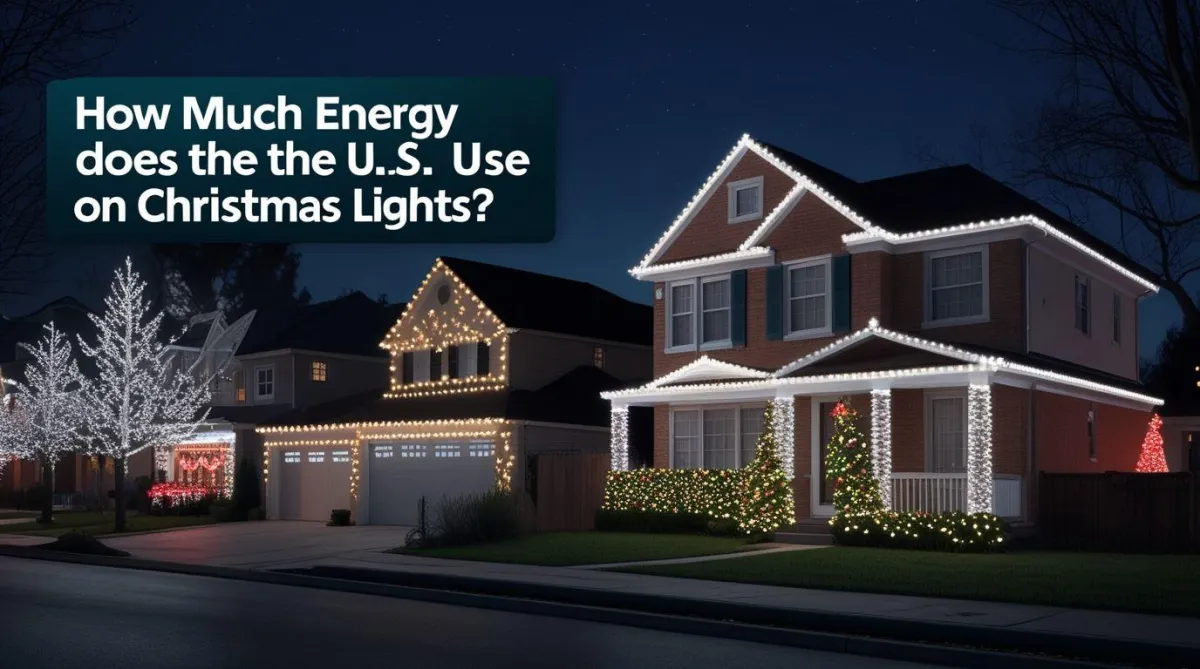
Energy Consumption of Christmas Lighting in the U.S. | Maes Lighting
Christmas lights bring festive cheer to homes across the United States, but they also contribute significantly to energy consumption during the holiday season. Understanding the energy demands of holiday lighting can help businesses and individuals make informed choices about efficient lighting solutions. At Maes Lighting, we provide energy-efficient LED options, including explosion-proof and vapor-tight fixtures, to illuminate spaces sustainably. This guide examines the energy Americans use to light up Christmas and how switching to LEDs can reduce costs and environmental impact.
The Scale of Christmas Lighting in the U.S.
Holiday lighting is a widespread tradition, with millions of American households decorating their homes each year. According to a 2020 study by Arcadia, approximately 90% of U.S. households celebrate Christmas, and about half of those use holiday lights. This results in an estimated 3.5 billion kilowatt-hours (kWh) of electricity consumed nationwide in December to power Christmas lights, costing Americans around $645 million annually. On average, each household with lights spends an additional $12 on their December electricity bill, though this can rise to $20 in states like California with higher electricity rates.
Energy Consumption Breakdown
The energy usage varies depending on the type and number of lights used. For example, a single strand of 100 incandescent mini lights consumes about 40 watts per hour, or 0.95 kWh per day if left on for 24 hours. In contrast, a comparable strand of LED lights uses only 4.8 watts per hour, or 0.11 kWh per day—a savings of nearly 90%. For a typical household using 1,000 lights (10 strands) running 6 hours daily over 31 days in December, incandescent lights would use 74.4 kWh, while LEDs would use just 8.9 kWh. At the national average electricity rate of $0.18 per kWh as of October 2024, this translates to $13.39 for incandescents versus $1.60 for LEDs per household. [Ref web ID: 1] [Ref web ID: 5]
Factors Affecting Energy Use for Christmas Lights
Several factors influence the energy consumption of Christmas lighting, from the type of bulbs to usage patterns.
Type of Lights: Incandescent vs. LED
Incandescent Christmas lights, while traditional, are far less efficient, using 80–90% more energy than LEDs. A 100-count strand of incandescent mini lights uses 40 watts, while a 70-count LED strand uses just 4.8 watts. LEDs also last longer—up to 100,000 hours compared to 3,000 hours for incandescents—reducing replacement costs. [Ref web ID: 5] [Ref web ID: 6]
Duration of Use
The longer lights are on, the higher the energy consumption. Many Americans leave lights on for extended periods, often 6–14 hours daily. Automating lights with timers or smart plugs can reduce usage to essential hours, saving up to 40% on electricity costs. For instance, limiting a 14.5-hour daily usage to 6 hours cuts energy use significantly. [Ref web ID: 0]
Display Size and Additional Decorations
Larger displays with inflatables or projection lights add to energy use. A typical 8-foot inflatable decoration uses about 4 cents per hour, or $1 daily if running 24/7. Projection lights, often using 5–6 watt LED bulbs, add roughly $0.18 to monthly bills for 6 hours of daily use over December. [Ref web ID: 1] [Ref web ID: 18]
Environmental and Cost Impacts
The 3.5 billion kWh used for Christmas lights emits approximately 3 billion pounds of CO2, equivalent to the emissions of powering 14 million refrigerators for a year. However, switching to LEDs can reduce this energy use by up to 75%, significantly lowering both costs and emissions. For example, a household switching from 1,000 incandescent lights to LEDs saves about $11.79 monthly and reduces CO2 emissions proportionally. [Ref web ID: 2] [Ref web ID: 18]
How Maes Lighting Can Help
At Maes Lighting, we offer energy-efficient LED solutions for all settings, including LED floodlights and high bay LEDs, which can be adapted for festive displays in industrial or commercial spaces. Our explosion-proof LEDs ensure safe illumination in hazardous environments, even during holiday setups. Contact us at (866) 860-6399 or visit our contact page to explore sustainable lighting options.
Conclusion
Christmas lighting in the U.S. consumes significant energy, but adopting LED lights can drastically reduce costs and environmental impact. By making smart choices, such as using LEDs and automating usage, businesses and households can enjoy the festive season sustainably. Explore Maes Lighting’s LED collection to brighten your holidays efficiently.



